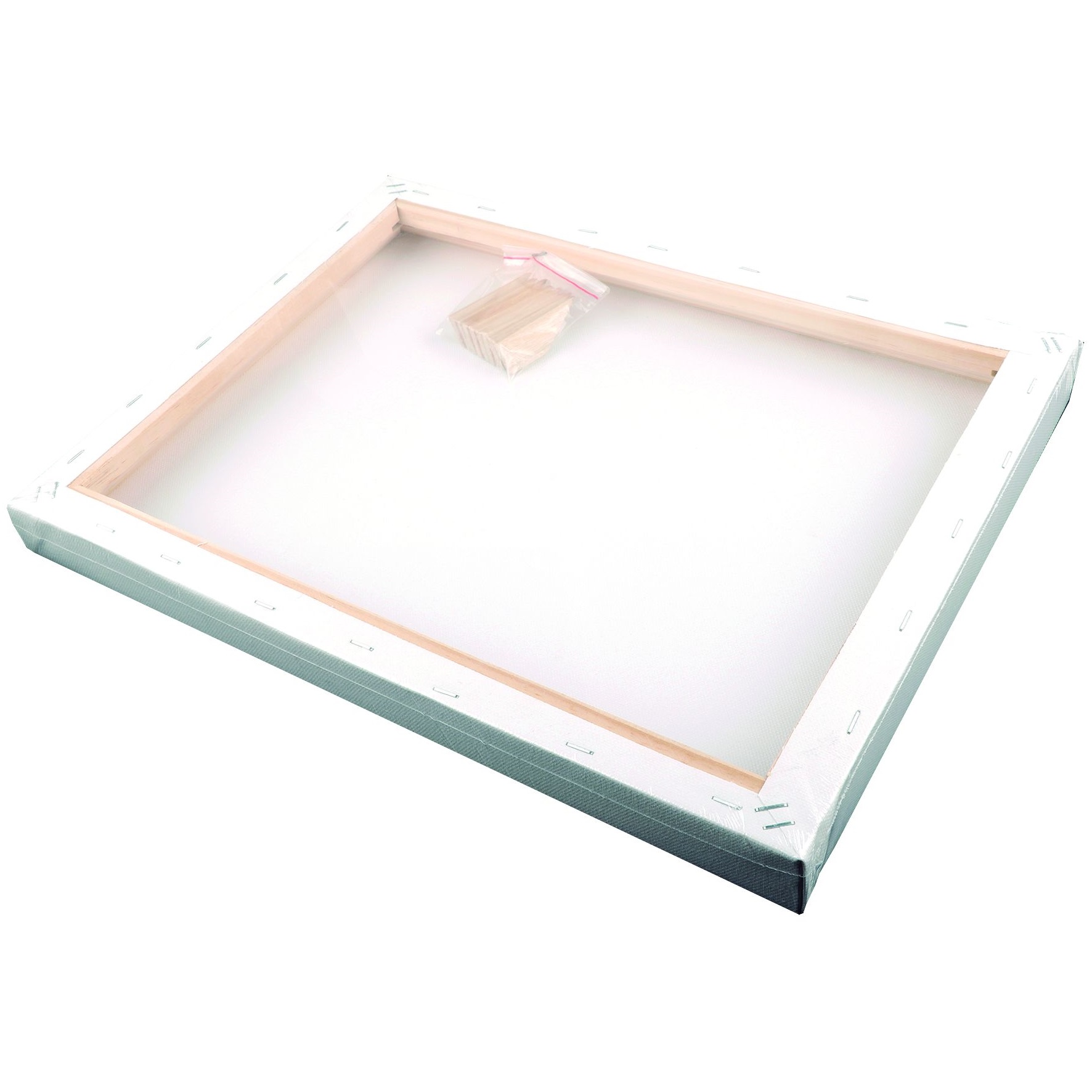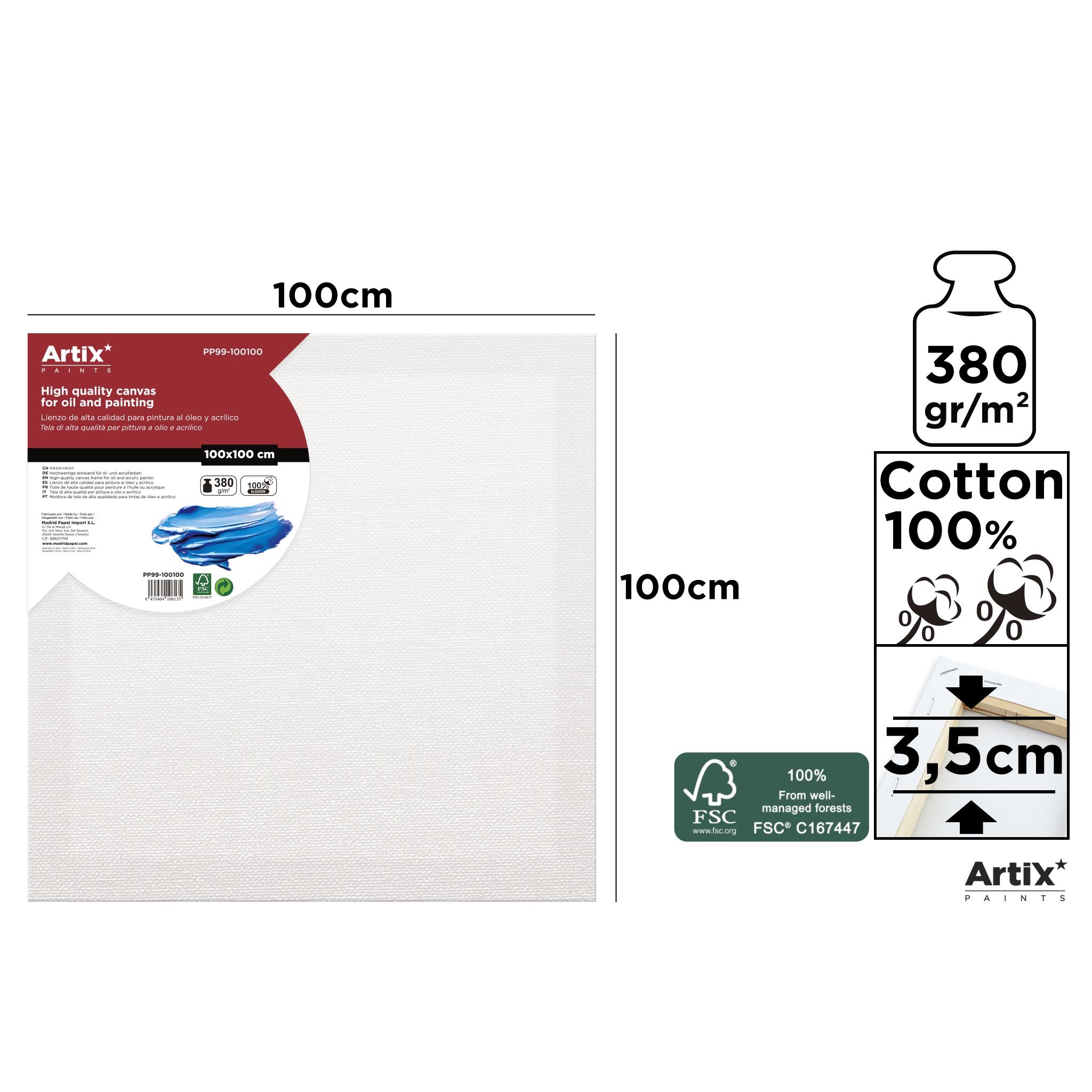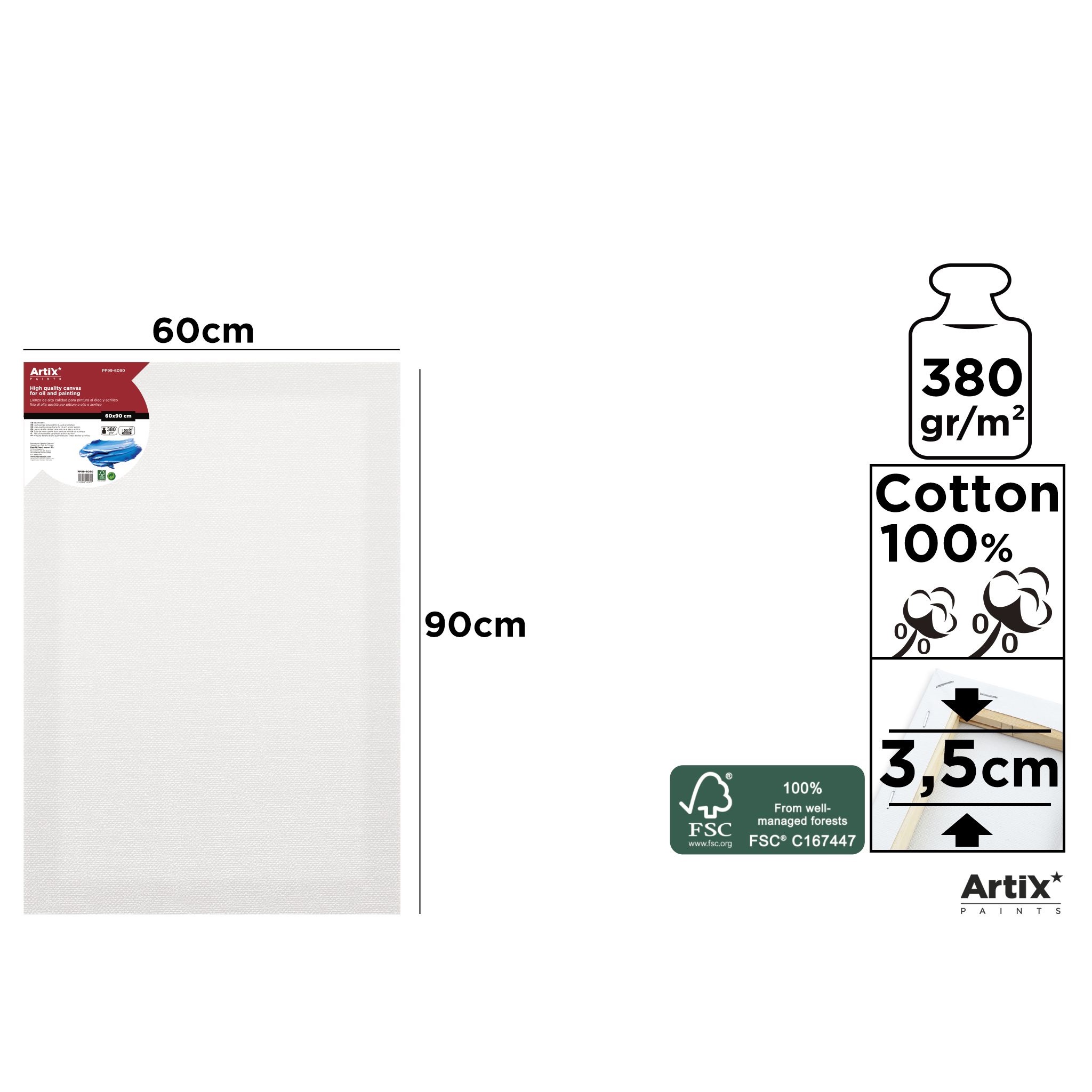How to Choose the Best Cotton Canvas for Your Art

Choosing the right cotton canvas can make a big difference in your art. It’s not just about having a surface to paint on; it’s about enhancing your artistic expression. You’ll want to consider a few key factors when selecting your canvas. The material, weight, and priming all play crucial roles in how your artwork turns out. Each of these elements impacts the texture, durability, and overall look of your finished piece. By understanding these factors, you can make informed decisions that elevate your art to new heights.
Key Takeaways
- Understand the differences between cotton and linen canvas to choose the best material for your artistic needs.
- Consider the weight of the canvas; heavier canvases are ideal for oil painting, while lighter ones suit detailed acrylic work.
- Choose between primed and unprimed canvases based on your preference for convenience or customization in texture.
- Experiment with different weave types to find the texture that enhances your painting style, whether it’s smooth for details or textured for depth.
- Select the right canvas size to match your artistic vision and the impact you want your artwork to have in a space.
- Explore trusted brands like Main Paper and Winsor & Newton for quality options, while also considering budget-friendly choices like Arteza.
- Don’t hesitate to experiment with various canvases to discover what best supports your creative expression and artistic journey.
Material Comparison: Cotton Canvas vs. Linen
When you’re choosing a canvas for your art, understanding the differences between cotton canvas and linen can help you make the best decision. Each material has unique characteristics that affect your painting experience and the final outcome of your artwork.
Characteristics of Cotton Canvas
Cotton canvas is a popular choice among artists for several reasons. It’s affordable and widely available, making it accessible for beginners and professionals alike. The texture of cotton canvas is smooth, which allows for easy application of paint. This material is also flexible, so it stretches well over frames without tearing. You can find cotton canvases in various weights, giving you options depending on your painting style and preference.
Characteristics of Linen Canvas
Linen canvas, on the other hand, is known for its durability and strength. It has a natural luster that adds a unique quality to your paintings. Linen fibers are longer and stronger than cotton, which means they hold up better over time. This material is less prone to warping and offers a more refined texture. Artists often choose linen for its superior quality and longevity, especially for works intended to last for generations.
Pros and Cons of Each Material
Both cotton canvas and linen have their pros and cons. Cotton canvas is cost-effective and easy to work with, making it ideal for practice and experimentation. However, it may not last as long as linen. Linen canvas provides a high-quality surface that enhances the appearance of your art, but it comes at a higher price. It requires more care in handling and preparation.
Ultimately, the choice between cotton canvas and linen depends on your artistic goals and budget. If you’re just starting out or working on a tight budget, cotton canvas might be the way to go. For professional projects or pieces you want to preserve, linen could be worth the investment.
Understanding Canvas Weight and Weave

When selecting a canvas, understanding its weight and weave can significantly impact your painting experience. Let’s dive into these aspects to help you make an informed choice.
What is Canvas Weight?
Canvas weight refers to the heaviness of the fabric, usually measured in grams per square meter (gsm). A heavier canvas provides a sturdier surface, while a lighter one offers more flexibility. You might find that a heavier canvas supports thicker paint applications better. It also resists sagging over time. On the other hand, a lighter canvas may suit detailed work or smaller pieces. Consider your painting style and the medium you use when choosing the weight.
How Weight Affects Painting
The weight of your canvas can influence how your paint behaves. A heavier canvas absorbs paint differently than a lighter one. You might notice that colors appear more vibrant on a heavier canvas due to its ability to hold more paint. This can be particularly beneficial for bold, expressive works. Conversely, a lighter canvas might allow for more delicate brushwork. It can also be easier to transport and store. Think about the effect you want to achieve in your artwork when deciding on the canvas weight.
Different Weave Types and Their Impact
The weave of a canvas refers to how the threads are interlaced. This affects the texture and appearance of your painting surface. A tight weave creates a smooth surface, ideal for fine details and precise lines. You might prefer this for portraits or intricate designs. A looser weave, however, offers a more textured surface. This can add depth and interest to your work, especially in abstract or impressionistic styles. Consider experimenting with different weaves to see which complements your artistic vision best.
Understanding these elements of cotton canvas will help you choose the right one for your art. By considering weight and weave, you can enhance your painting process and achieve the results you desire.
Primed vs. Unprimed Cotton Canvases
When you’re choosing a cotton canvas, you’ll come across two main types: primed and unprimed. Each has its own set of benefits and uses, depending on your artistic needs.
Benefits of Primed Canvases
Primed canvases come ready to use, saving you time and effort. The primer, usually gesso, creates a smooth surface that enhances paint adhesion. This means your colors will appear more vibrant and last longer. Primed canvases also prevent paint from soaking into the fabric, which can help preserve your artwork. If you want to dive straight into painting without preparation, a primed canvas is a great choice.
When to Use Unprimed Canvases
Unprimed canvases offer more flexibility in terms of texture and finish. You can apply your own primer, allowing you to control the surface’s texture. Some artists prefer the raw, natural look of unprimed cotton canvas, especially for specific techniques like staining. If you enjoy customizing your materials or experimenting with different effects, an unprimed canvas might suit your style.
How to Prime Your Own Canvas
Priming your own canvas is a straightforward process. Start by laying your unprimed canvas flat. Use a wide brush or roller to apply a thin layer of gesso. Let it dry completely before adding a second coat. You can sand the surface lightly between coats for a smoother finish. This process allows you to tailor the canvas to your specific needs, giving you more control over your painting surface.
Choosing between primed and unprimed canvases depends on your artistic goals and preferences. Whether you want convenience or customization, understanding these options will help you make the best choice for your art.
Choosing Cotton Canvas Based on Painting Technique and Size

When selecting a cotton canvas, consider your painting technique and the size of your artwork. These factors can greatly influence your creative process and the final result.
Best Canvas for Oil Painting
Oil painting requires a sturdy surface that can handle the weight and texture of the paint. A heavier cotton canvas works well for oil painting. It provides a solid foundation that supports thick layers of paint. Look for canvases with a weight of at least 300 grams per square meter. This ensures durability and prevents sagging over time. Primed canvases are ideal for oil painting because they prevent the oil from seeping into the fabric. This keeps your colors vibrant and your artwork preserved.
Best Canvas for Acrylic Painting
Acrylic painting offers more flexibility in terms of canvas choice. You can use both light and heavy cotton canvases depending on your style. A lighter canvas might suit detailed work or smaller pieces. For bold and expressive acrylic paintings, a heavier canvas provides better support. Acrylic paint dries quickly, so a primed canvas helps maintain the vibrancy of your colors. If you enjoy experimenting, try using an unprimed canvas to create unique textures and effects.
Selecting Canvas Size for Your Art
Choosing the right canvas size depends on your artistic vision and the space where you plan to display your work. Smaller canvases are great for detailed work and intimate pieces. They are also easier to transport and store. Larger canvases allow for more expressive and dynamic compositions. They make a bold statement and can fill a room with their presence. Consider the scale of your subject and the impact you want to achieve. Experiment with different sizes to find what best suits your artistic goals.
By considering your painting technique and the size of your artwork, you can select the perfect cotton canvas to enhance your creative expression. Whether you’re working with oils or acrylics, the right canvas will support your artistic journey.
Brand Recommendations for Cotton Canvas
When you’re on the hunt for the perfect cotton canvas, knowing which brands to trust can make your decision easier. Let’s explore some top brands, budget-friendly options, and premium choices that cater to both beginners and seasoned artists.
Top Brands for Cotton Canvases
-
Main Paper: Known for its high-quality art supplies, Main Paper offers the PP99 High Quality Professional Art Canvas. This canvas is crafted from 100% cotton and provides a robust surface for various painting techniques. With its substantial weight and triple-coated primer, it ensures vibrant colors and long-lasting artwork.
-
Winsor & Newton: A favorite among artists, Winsor & Newton provides a range of cotton canvases that are both reliable and versatile. Their canvases come in different sizes and weights, catering to diverse artistic needs.
-
Fredrix: Fredrix has been a trusted name in the art world for years. They offer a wide selection of cotton canvases, known for their durability and excellent surface quality. Artists appreciate the consistency and performance of Fredrix products.
Budget-Friendly Options
-
Arteza: If you’re looking for affordable yet quality canvases, Arteza is a great choice. They offer packs of cotton canvases that are perfect for practice and experimentation. Despite their lower price, Arteza canvases maintain a good level of quality.
-
U.S. Art Supply: This brand provides economical options for artists on a budget. Their cotton canvases are available in bulk, making them ideal for students or those who paint frequently.
-
Darice: Known for crafting supplies, Darice offers budget-friendly cotton canvases that are suitable for beginners. These canvases provide a decent surface for learning and honing your skills.
Premium Choices for Professionals
-
Main Paper’s PP99 High Quality Professional Art Canvas: For professionals seeking excellence, the PP99 canvas stands out. Its 380 gsm weight and triple priming offer a superior painting experience. The sturdy wooden frame and adjustable wedges ensure a taut surface, making it a premium choice for serious artists.
-
Masterpiece Artist Canvas: This brand is synonymous with luxury and quality. Masterpiece canvases are meticulously crafted, offering unparalleled texture and durability. They are perfect for artists who demand the best for their masterpieces.
-
Sennelier: Known for their fine art supplies, Sennelier provides high-end cotton canvases that meet the needs of professional artists. Their canvases are designed to enhance the longevity and beauty of your artwork.
Choosing the right brand can significantly impact your artistic journey. Whether you’re just starting or you’re a seasoned professional, these recommendations will help you find the perfect cotton canvas to bring your creative visions to life.
Choosing the best cotton canvas for your art involves understanding key factors like material, weight, and priming. Each element plays a crucial role in how your artwork turns out. By exploring different options, you can find what suits your style and needs. Don’t hesitate to experiment with various canvases to discover your personal preference. This journey of exploration will enhance your artistic expression and help you create pieces that truly reflect your vision.
FAQ
What is the best weight for a cotton canvas?
The best weight for a cotton canvas depends on your painting style. For oil painting, a heavier canvas, around 300 grams per square meter, works well. It provides a sturdy surface for thick paint layers. For acrylics, you have more flexibility. You can choose a lighter canvas for detailed work or a heavier one for bold expressions.
Should I choose a primed or unprimed canvas?
Choose a primed canvas if you want to start painting right away. It saves you time and enhances color vibrancy. An unprimed canvas offers more control over texture. You can apply your own primer to customize the surface. If you enjoy experimenting, an unprimed canvas might suit you.
How do I prime my own canvas?
Priming your own canvas is simple. Lay the canvas flat. Use a wide brush or roller to apply a thin layer of gesso. Let it dry completely. Add a second coat if needed. Sand lightly between coats for a smoother finish. This process lets you tailor the canvas to your needs.
Can I use cotton canvas for watercolor painting?
Cotton canvas is not ideal for watercolor painting. Watercolors require a surface that absorbs water well, like watercolor paper. However, you can use a specially treated canvas designed for watercolors. These canvases have a unique coating that allows watercolor paints to adhere properly.
How do I choose the right canvas size?
Consider your artistic vision and display space. Smaller canvases work well for detailed pieces. They are easy to transport and store. Larger canvases allow for expressive compositions. They make a bold statement in a room. Think about the impact you want to achieve and experiment with different sizes.
What are some top brands for cotton canvases?
Some top brands include Main Paper, Winsor & Newton, and Fredrix. Main Paper offers the PP99 High Quality Professional Art Canvas, known for its robust surface and vibrant colors. Winsor & Newton provides reliable and versatile options. Fredrix is trusted for its durability and excellent surface quality.
Are there budget-friendly canvas options?
Yes, there are budget-friendly options. Arteza offers affordable packs of cotton canvases. U.S. Art Supply provides economical choices in bulk. Darice offers canvases suitable for beginners. These options are great for practice and experimentation without breaking the bank.
How do I care for my finished canvas artwork?
To care for your finished canvas artwork, keep it away from direct sunlight and moisture. Dust it gently with a soft cloth. Avoid touching the painted surface. If you need to transport it, use protective packaging. Proper care ensures your artwork lasts for years.
Can I paint over an old canvas?
Yes, you can paint over an old canvas. First, clean the surface. Apply a fresh coat of gesso to cover the previous artwork. Let it dry completely. This creates a new surface for your painting. Painting over an old canvas is a great way to recycle materials and save money.
What is the difference between cotton and linen canvas?
Cotton canvas is affordable and smooth. It’s flexible and stretches well over frames. Linen canvas is durable and strong. It has a natural luster and refined texture. Linen holds up better over time. Choose cotton for cost-effectiveness and linen for longevity and quality.
Post time: Dec-25-2024












